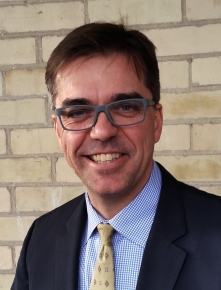Guest Blog: Dr. Ian Digby

 It has been a pleasure to work as Emergency Department Lead for the Waterloo Wellington LHIN since 2013. Over this period, Ontario health care has undergone tremendous transformation and local hospitals have worked through innumerable changes to improve patient care. I am inspired by the work of so many people to maintain excellent emergency services.
It has been a pleasure to work as Emergency Department Lead for the Waterloo Wellington LHIN since 2013. Over this period, Ontario health care has undergone tremendous transformation and local hospitals have worked through innumerable changes to improve patient care. I am inspired by the work of so many people to maintain excellent emergency services.
Since 2013, the number of local Emergency Department (ED) patient visits has increased faster than population growth, while patient complexity (as measured by numbers of ambulance patients, admitted patients and triage acuity scales) has increased markedly. Despite these challenges local EDs have maintained top provincial rank for several wait time metrics. Simply put, hospitals have responded to “front door” pressures with improved performance and patient wait times.
Credit for these improvements goes to the individual staff at each hospital, but also to the shared work of the Waterloo Wellington Local Health Integration Network Emergency Department Integrated Clinical Council. The “WWLHIN ED Council” was created in 2013 with an agenda to promote quality improvement and improve patient experience and wait times. We adopted best practices for asthma, stroke, trauma care and ambulance offload and quality improvement for patient experience and flow. Council members openly shared data and learned from one another’s challenges and successes.
In the fall of 2015, the WWLHIN ED Council tackled the annual “seasonal surge” through a series of multi-stakeholder meetings with hospitals, public health, primary care, and long-term care (seasonal surge is an annual period in which health care providers see an increased volume of patients as a result of cold and influenza season). Members developed novel methods to communicate and reduce patient backlogs. In 2016, these methods saw some success with improved wait times, but this current winter seasonal surge has been a challenge across our health system as a result of unprecedented volumes. Nevertheless I believe we are in a better place due to our collective preparation and planning.
As ED Lead, I attended monthly meetings to shape Provincial policy around issues like physician recruitment, ED funding, Ebola response and the newest challenge of potent narcotic street drugs. In turn, I worked to translate these ideas into practice at ED Council and individual hospitals so we could stay ahead of the curve in championing best practices. Waterloo Wellington is viewed as a leader due to our ability to activate new care models.
We are in the midst of great change in Ontario health care with new Patients First legislation and transformation at the LHIN. For the next while I will be stepping back from a regional role and focusing my work on my home community. It has been a great pleasure to work with so many skilled and committed people across the LHIN and I look forward to continuing to work together.
*The Waterloo Wellington LHIN would like to thank Dr. Digby for his invaluable leadership over the past four years. Over that time, we have made significant progress in reducing wait times for local residents. We are fortunate to continue benefiting from his leadership at Guelph General Hospital and at our ED Council.
